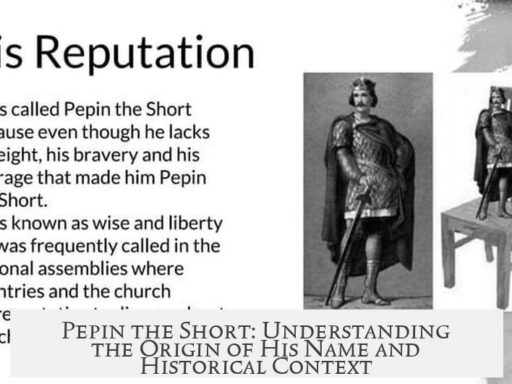Tattoos in the Song Dynasty held diverse roles, largely shaped by social status and cultural values, especially Confucian principles that emphasized bodily integrity. The practice ranged from punitive branding to expressions of loyalty in the military, with clear distinctions based on class and purpose.
Tattooing functioned primarily in four social contexts during the Song Dynasty. First, as a form of punishment. Criminals were tattooed to mark their shame publicly. Confucian doctrine, central to the period, stressed preserving the body given by one’s parents as an act of filial piety. Tattoos, therefore, symbolized not only legal condemnation but also moral failure. The stigma linked to this practice deeply influenced social attitudes toward tattooing.
Second, slaves and concubines often received tattoos as branding to indicate ownership or as punishment. This physical marking served as a control mechanism, deterring escape or disobedience. Some punishments for slaves were harsh and arbitrary; for example, a slave girl could be tattooed for appearing too attractively made up. Such tattoos inscribed social hierarchy and control visually on the body.
The third main use was within the military. Soldiers used tattoos to display courage, loyalty, and commitment to the state. A famous example is the Song general Yue Fei, who reportedly bore a tattoo pledging “Serve the nation with absolute loyalty.” Such tattoos were marks of honor and morale, separating them culturally from the stigma attached to punitive tattoos. Another documented case involved Wang Yan and his outnumbered soldiers, who voluntarily tattooed oaths like “With pure heart defend the realm” on their faces to show resolve against the Jurchen invasion.
Lastly, tattoos also appeared among commoners, often featuring figurative or textual designs such as images of Heavenly Kings, snakes, or poetry by Bai Juyi. These were more prevalent among the lower classes. Stories involving these tattoos often mention alcohol consumption, suggesting a connection with social gatherings or rebellious behavior. This type of tattooing was less respected and associated with marginal social groups.
Historically, tattoo practices did not originate with the Song Dynasty but evolved through preceding eras. The Five Dynasties period saw military tattooing on the face and hands reinstated by Liu Shougang. Reports from the time mention bandits tattooing captured individuals to enslave them, illustrating the use of tattoos as markers of enforced servitude. The Later Liang dynasty’s first emperor further institutionalized tattooing by marking soldiers with their rank and post.
| Period | Tattoo Practice | Purpose |
|---|---|---|
| Five Dynasties | Facial and hand tattoos on military | Identification, discipline |
| Later Liang (907) | Soldiers tattooed with rank/post | Military organization |
| Song Dynasty | Military oaths tattooed on faces | Demonstrate loyalty, morale |
Confucianism significantly shaped the perception of tattoos. The dominant belief emphasized filial piety, including protecting the body entrusted by one’s parents. Consequently, tattoos, except those related to military oaths, were viewed negatively by the upper classes. This moral stance labeled tattoos as shameful marks for criminals and slaves. Even though soldiers’ tattoos signified valor, the broader cultural framework discouraged tattooing.
Social hierarchy influenced tattoo prevalence and acceptance. Most tattoo wearers came from lower social strata or the military. Full body tattoos were uncommon but gained some prominence during the Northern Song period, continuing a practice that began in the Tang dynasty. Both men and women bore tattoos, with forms and meanings adapted to their roles within society.
The mixed uses of tattoos reflect the complexities of Song society and its values.
- Punitive tattoos branded criminals and slaves, carrying social shame.
- Military tattoos signified loyalty and courage, respected as honorable.
- Lower-class tattoos involved cultural or personal symbolism, often linked to alcohol and marginality.
- Confucian ethics predominantly discouraged tattoos due to filial piety concerns.
- Historical precedents from earlier dynasties shaped Song tattoo practices.
- Full body tattooing was more frequent in the Northern Song, reflecting deeper regional variations.
Tattoos in the Song Dynasty serve as a window into the social structures, cultural norms, and political realities of the time. They varied widely in meaning and status, with usage delineated along clear lines of class and context.
What was the main reason tattoos were used as punishment in the Song Dynasty?
Tattoos marked criminals to brand them with shame. Confucian beliefs stressed preserving the body as a form of respect for one’s parents, so tattooing a criminal was an added punishment and public stigma.
How did tattoos function in the military during the Song Dynasty?
Soldiers tattooed words or images to show loyalty and courage. For example, General Yue Fei bore a tattoo that promised absolute loyalty to the nation. Tattoos acted as oaths and signs of devotion in battle.
Why were tattoos viewed negatively by the upper class in the Song Dynasty?
The Confucian ideal valued preserving the body as filial piety. Tattoos, except for military oaths, were seen as dishonorable or linked to the lower class, reinforcing social stigma against tattooed individuals.
Were tattoos common among women in the Song Dynasty?
Yes, both men and women were tattooed. Sometimes concubines or slaves received tattoos, often as punishment or branding, reflecting their lower social status.
Did tattoos have any cultural or symbolic imagery in the Song Dynasty?
Yes, people tattooed images like Heavenly Kings, snakes, or poems by Bai Juyi. These tattoos were usually associated with the lower class and occurred alongside drinking or other informal settings.




